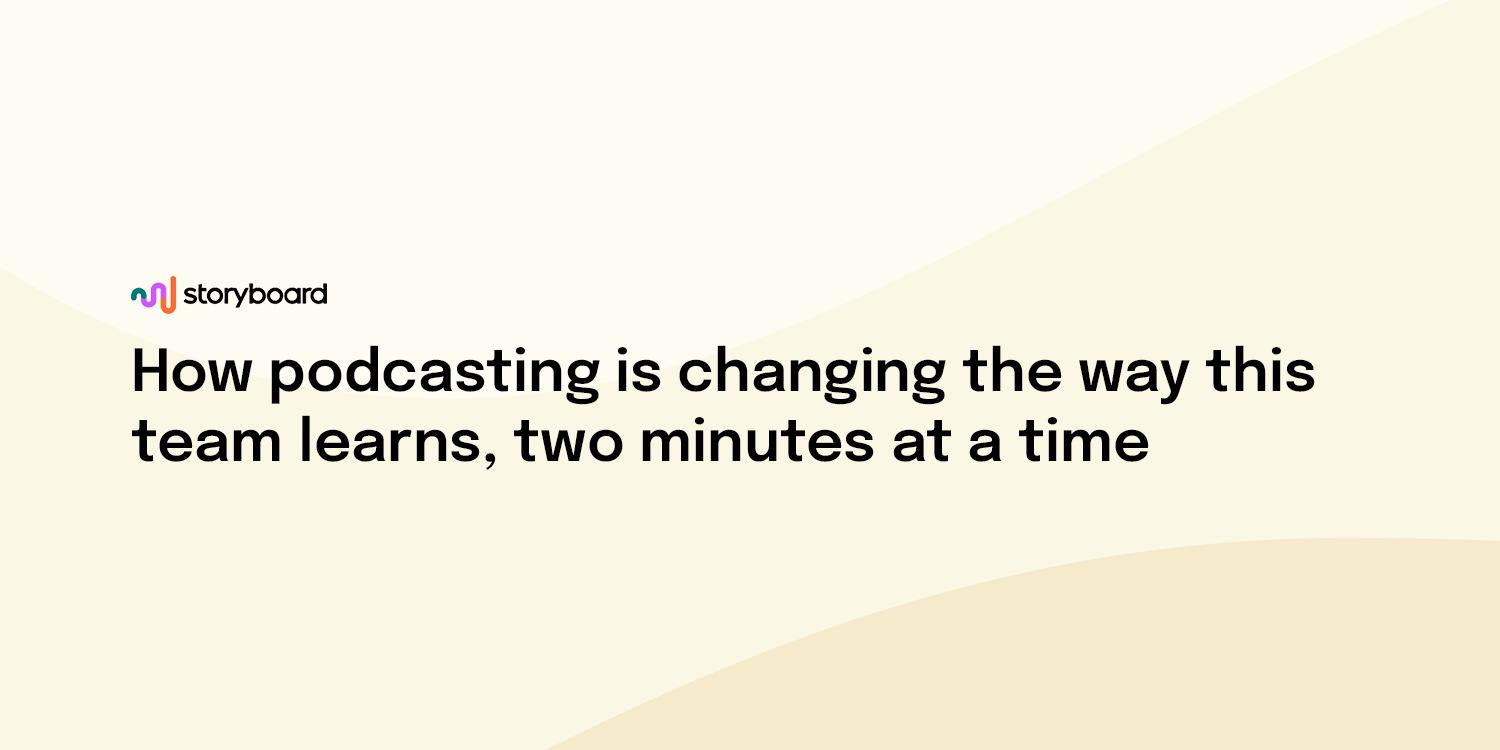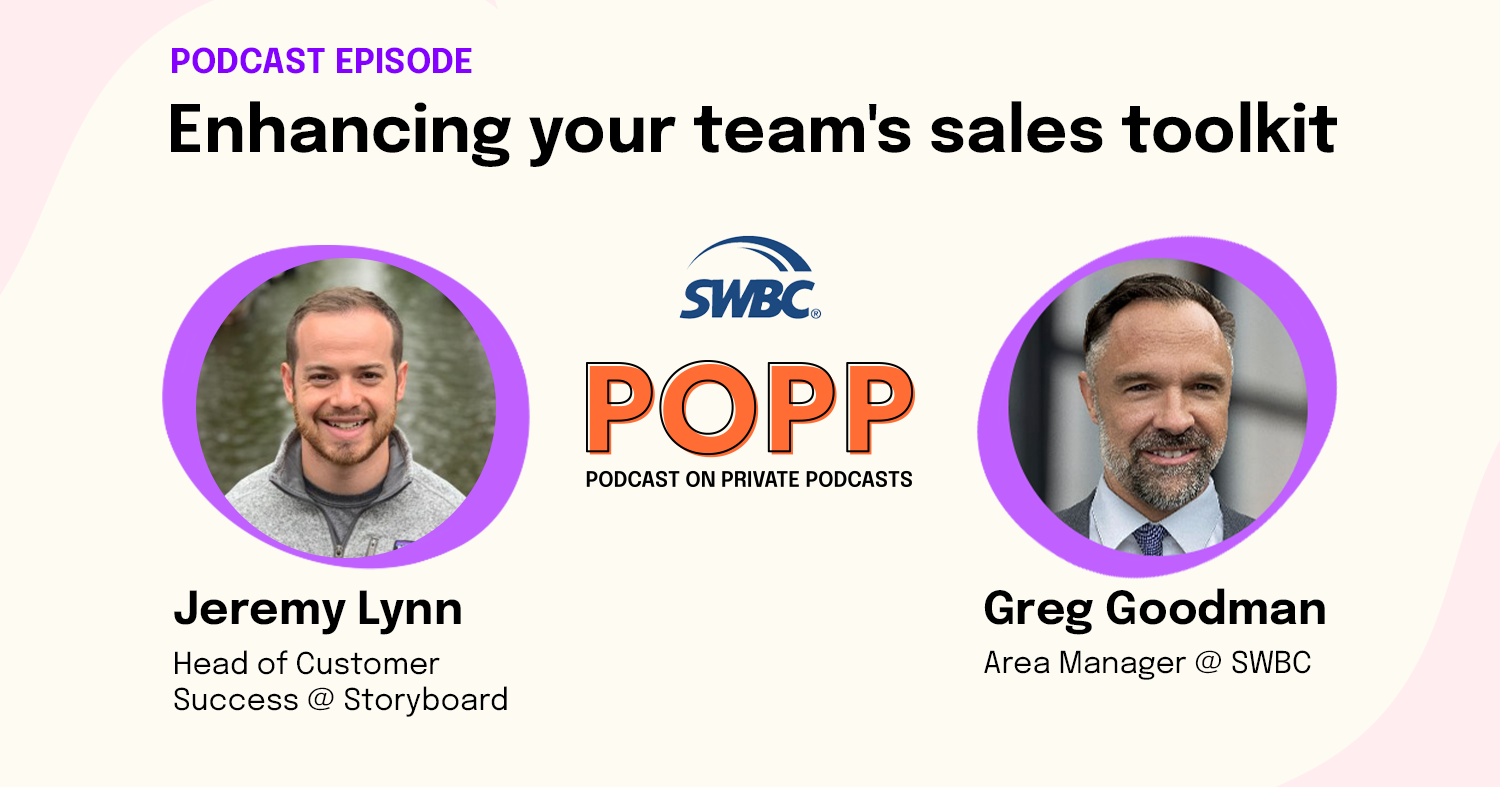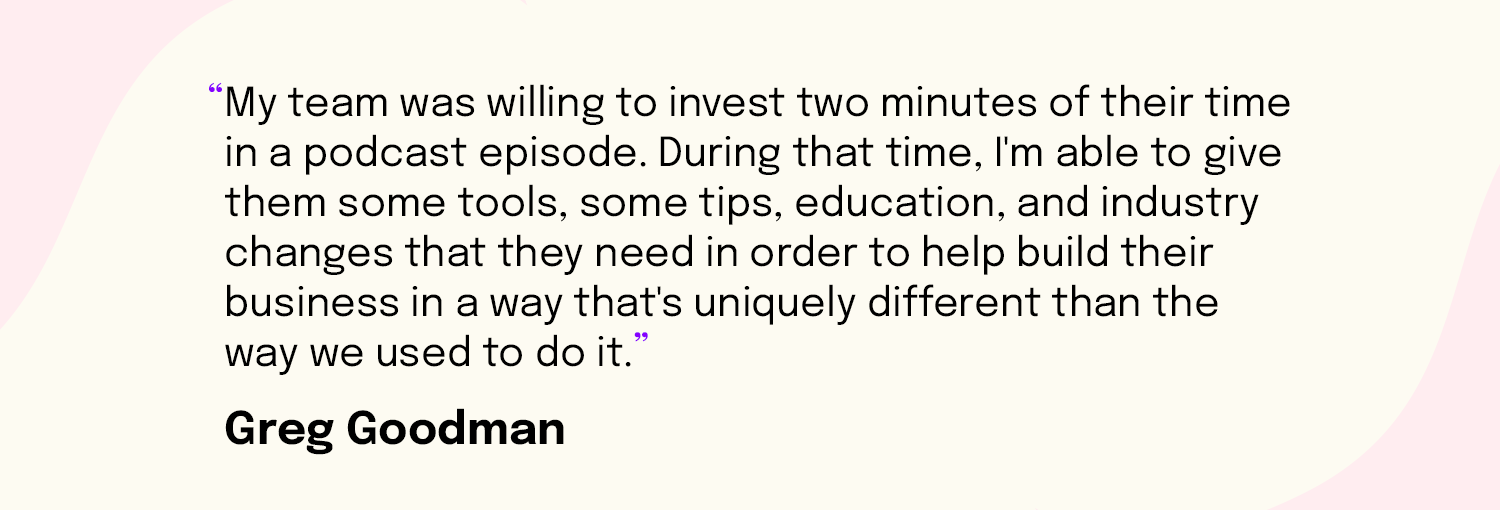How podcasting is changing the way this team learns, two minutes at a time

How does your team convey important information?
For some, it’s printed-out signs broadcasting the latest announcement on the office bulletin board.
For others, it’s a long email, with important information bolded or highlighted in red.
However, no amount of bolding or cleverly designed signs can convey the importance of an announcement as easily as audio. Greg Goodman, the area manager for financial services company SWBC, learned that in two-minute increments.
In an episode of our “Behind the Mic: The Creator Series,” Greg Goodman shares how even the shortest podcast can make the biggest difference when it comes to engagement.
Click here to listen to the full episode: https://www.buzzsprout.com/881431/12479551

Borning, bolded emails weren’t working
By the time he found Storyboard, Goodman thought he’d already tried every tool to talk with his team. Before COVID, Goodman’s team mostly shared information in-person in the office.
They’d discuss the latest financial news that might be impacting the mortgage process, helping team members stay up on current events before heading out to network with real estate agents and clients.

But, once in-person became a challenge Goodman tried everything to keep up the conversation without much success. When regular emails didn’t cut it, he tried video email. And yet, he noticed knowledge gaps and a lack of communication across his organization.
“We were not having meaningful conversations. We were not engaging. We were not educated. We just were not doing what we needed to do for a couple of years. And I had to find different ways to engage with the staff,” says Goodman.
How microlearning makes a difference
With time and attention at a premium, Goodman knew he had to try something different from the long emails he was used to sending, no matter how well written or concise: “ I just wasn't able to capture their attention long enough to make it to where they were willing to, even though I had great content, it didn't matter.”
Oh a whim, Goodman decided to try podcasting. Although he was not a podcast listener at the time, he thought, what’s the harm in hitting record?
“I found that they are willing to invest two minutes of their time. During that time, I'm able to give them some tools, some tips, education, industry changes that they need in order to help build their business in a way that's uniquely different than the way we used to do it,” Goodman says.
Goodman keeps his internal podcast episodes close to two minutes, creating microlearning moments for his team. He’s found that anyone has two minutes to listen to something, whether waiting in line or walking from the parking lot into the office.
In those two minutes, Goodman shares quick updates, including everything from how current events are impacting the mortgage market to micro-trends in homeownership.

Finding inspiration on the turn of a dime
The idea of recording a two-minute podcast might sound intimidating, but Goodman finds the process means taking the idea to a podcast episode quickly.
Here’s what Goodman’s process looked like for a recent podcast episode:
👉Inspiration strikes. On an annual trip to Colorado with his son, Goodman was inspired talking to young people about their employment trends and “the fact that first-time home buyers are now almost 40 years old [...] What are some solutions for young people [to purchase property?”
👉Translating into content. With the kernel of an idea, Goodman started thinking about mortgage products that help these young people buy homes sooner. Is his team up on these programs, or could a two-minute podcast provide a proper refresher on the topic?
👉Hitting record. From brainstorming to recording doesn’t take long. Once Goodman has an idea and information, it doesn’t take much to create an episode. In fact, he did it on vacation; “I didn't have to be at the office. I didn't have to have my laptop. I just had to have my cell phone and so I quickly recorded a podcast that I keep them around two minutes. And I was able to get that information out to the sales field immediately without having to go through a lot of hoops."
👉Sharing with ease. Since they’re such short episodes, Goodman doesn’t stress about production quality. It’s more about getting the information out quickly, in a way that’s easy to digest, he says, “What podcasting has done for me is communicate a level of emotion, excitement, a level of connection that I cannot get through other media.”

It doesn’t take much to start today
Since Goodman’s started podcasting with his team, he’s found it’s actually saved him time:
“It's actually helped us grow our team. It's helped me retain loan officers too because I've been able to stay more connected to them. They feel a sense of connection to me through the podcast. So it's allowed me more time. It's freed up more time for me to recruit more loan officers and to stay present, to stay top of mind, because there's a lot of companies out there that recruit, that try to recruit, our staff."
With the help of Storyboard, the team at SWBC is transforming its communications culture, two minutes at a time.
Podcasting doesn’t have to be tricky or time-consuming. All it takes is an idea and a few minutes. Are you ready to start with Storyboard today? Create an account for free and launch your channel for up to 50 listeners.
Contact the sales team for more information or to receive a free platform demo.
“Behind the Mic: The Creator Series” is Storyboard’s own podcast featuring users who share why they brought podcasting to their organization, what makes audio a distinct communication tool for deskless and remote workers, and much more. Listen to all of our episodes, linked here.


